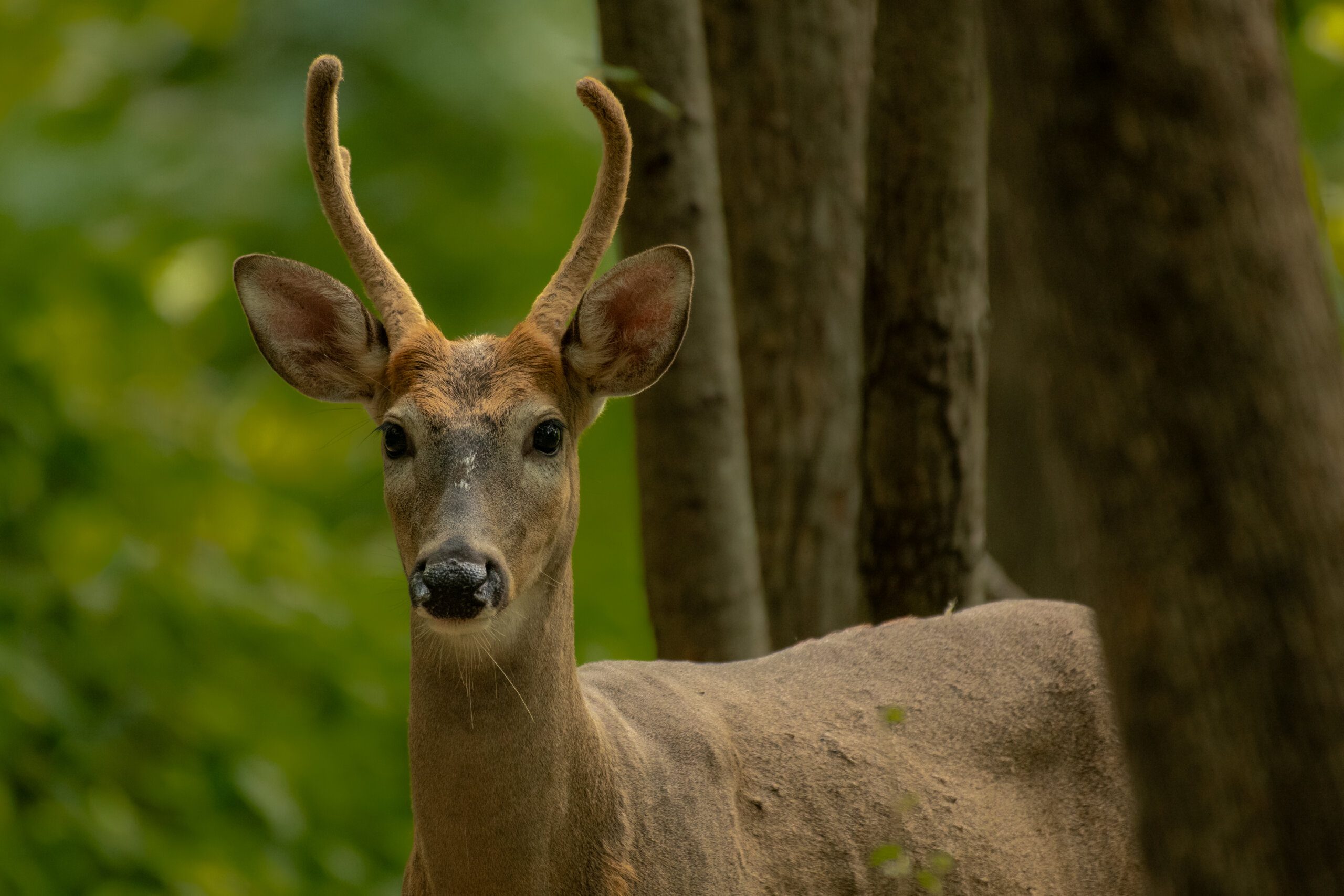Are you curious about the similarities and differences between capybaras and prairie dogs? If so, you’ve come to the right place! In this captivating article, we will take a closer look at these fascinating creatures, explore their unique characteristics, and uncover what sets them apart. Get ready to embark on a journey into the world of the capybara and prairie dog, as we dive into the captivating comparison of two remarkable animals.

Physical Characteristics
Size
Capybaras are the largest rodents in the world, measuring around 3.5 feet long and weighing up to 150 pounds. On the other hand, prairie dogs are much smaller in comparison, typically around 12 to 16 inches long and weighing only 2 to 3 pounds.
Weight
As mentioned earlier, capybaras can reach an impressive weight of 150 pounds, making them significantly heavier than prairie dogs, which weigh only a few pounds. The weight difference between these two species is attributed to their contrasting body sizes and adaptations.
Coloration and Fur
Capybaras have a reddish-brown to dark brown fur that is thick and bristly. Their fur often appears coarse, with a few darker spots on their backs. In contrast, prairie dogs have a lighter fur color, ranging from grayish-brown to light brown. Their fur is generally softer and smoother than that of capybaras.
Body Shape and Adaptations
Capybaras have a stocky and barrel-shaped body, ideal for their semi-aquatic lifestyle. They have webbed toes, which enable them to swim effortlessly and navigate through various aquatic environments. Prairie dogs, on the other hand, possess a more slender body with shorter limbs, well-adapted for their burrowing habits. They have sharp claws that help them dig intricate tunnel systems.
Habitat and Distribution
Natural Habitat
Capybaras are primarily found in South America, inhabiting areas such as swamps, marshes, and densely vegetated regions close to bodies of water. They thrive in both freshwater and saltwater habitats, such as rivers, lakes, and coastal areas. Prairie dogs, on the other hand, are native to the grasslands of North America, including prairies and plains, where they dig extensive burrow systems.
Geographical Distribution
Capybaras can be found in various countries across South America, including Brazil, Argentina, Venezuela, and Colombia. They have a notably wide distribution due to their adaptability to different environments. Prairie dogs are predominantly found in the United States, particularly in states like Colorado, Texas, and Kansas, where vast expanses of open grasslands offer them suitable habitats.

Diet and Feeding Habits
Diet Composition
Capybaras are herbivores with a diet primarily consisting of grasses, aquatic plants, and fruits. They have specialized teeth, including large front incisors and sharp molars, which allow them to efficiently chew through tough vegetation. Prairie dogs are also herbivorous and mainly feed on grasses, seeds, leaves, and occasionally roots. Their diet primarily consists of the vegetation readily available in their grassland habitats.
Feeding Behavior
Capybaras are well-adapted for grazing and spend a significant amount of time in water, where they can access different aquatic plants. They are known to engage in a behavior called “coprophagy,” where they consume their own feces to extract additional nutrients. Prairie dogs are grazers as well, devoting much of their time to foraging for grasses. They have a fascinating feeding behavior called “bark stripping,” where they sit upright and strip the bark from trees and shrubs.
Social Structure and Behavior
Group Dynamics
Capybaras are highly social animals and live in large groups called “herds” or “capybara communities.” These herds are typically led by a dominant male, and they can consist of several adult females and their offspring. Prairie dogs also exhibit a complex social structure, forming large colonies known as “towns” or “colonies.” These towns can be comprised of hundreds of individuals, divided into smaller family groups.
Communication
Both capybaras and prairie dogs have effective ways of communication within their groups. Capybaras produce a range of vocalizations, including barks, whistles, and purrs, to convey different messages. They also engage in scent marking, using specialized glands to leave distinct chemical signals. Prairie dogs, meanwhile, are known for their distinctive vocalizations, such as barks and “jump-yips,” and they also use body language and head bobs to communicate with one another.
Reproduction and Parental Care
Capybaras have a polygynous mating system, where a dominant male mates with multiple females within the herd. After a gestation period of around 150 days, females give birth to an average of four to eight offspring, known as “pups.” Capybara mothers provide extensive care for their young, nursing them and protecting them from potential threats. Prairie dogs also have a polygynous mating system, and females give birth to litters of three to eight pups. They maintain strong family bonds, with both parents sharing parental responsibilities.

Predators and Defense Mechanisms
Natural Predators
Capybaras face several natural predators, including jaguars, pumas, caimans, and anacondas. These predators often target capybara young or individuals that are vulnerable while drinking water. Prairie dogs are also preyed upon by a variety of predators, such as coyotes, eagles, foxes, and badgers. Their burrow systems serve as a vital defense mechanism against predators, allowing them to retreat to safety.
Defensive Behaviors
When faced with danger, capybaras will often flee into the water, utilizing their excellent swimming abilities to escape predators. They can also emit warning whistles to alert other members of their herd about potential threats. Prairie dogs have a fascinating defense mechanism known as “jump-yipping,” where they leap into the air while emitting high-pitched alarm calls. This behavior is believed to serve as a warning to others in the colony, allowing them to take cover.
Environmental Impact
Interaction with Ecosystem
Capybaras and prairie dogs play essential roles in their respective ecosystems. Capybaras are considered ecosystem engineers, as their grazing habits can have a significant impact on vegetation and contribute to shaping the landscape. They also serve as a prey species, supporting the food chain and providing sustenance for their predators. Similarly, prairie dogs have a profound influence on their grassland habitats by influencing plant species composition, nutrient cycling, and soil structure through their burrowing activities.
Environmental Considerations
The presence of capybaras and prairie dogs in their natural habitats should be considered when making environmental management decisions. Their populations should be carefully monitored to ensure they are not impacted by habitat loss, pollution, or other human-induced factors. Developing conservation strategies that preserve their habitats and promote their long-term well-being is crucial for maintaining healthy ecosystems.
Conservation Status
Threats to Population
While capybara populations are generally stable and not currently considered threatened, they face localized threats from habitat destruction and pollution due to human activities. The expansion of urban areas and agricultural practices can encroach upon their habitats and disrupt their natural behaviors. Prairie dogs, on the other hand, face significant challenges, including habitat loss from conversion to farmland, poisoning due to perceived agricultural threats, and disease outbreaks such as sylvatic plague.
Conservation Efforts
Conservation efforts for capybaras and prairie dogs involve protecting their habitats, implementing sustainable land-use practices, and promoting public awareness about their ecological importance. Organizations and researchers are working to raise awareness about the need for prairie dog conservation, advocating for their protection and the preservation of their grassland habitats.
Role in Ecosystem
Ecosystem Functions
Capybaras and prairie dogs play vital roles in their respective ecosystems. Capybaras help control vegetation growth, prevent overgrazing, and contribute to nutrient cycling through their grazing habits. Their wallowing behavior in water bodies can even create habitats for other species. Prairie dogs also have a significant influence on their grassland ecosystems. Their burrow systems promote soil aeration, enhance water infiltration, and provide shelter for a variety of other animal species.
Ecological Contributions
Both capybaras and prairie dogs contribute to the overall biodiversity of their ecosystems. As prey species, they provide a valuable food source for carnivores and scavengers, thereby supporting a healthy predator-prey balance. Furthermore, their activities, such as grazing and burrowing, have cascading effects on plant communities, soil structure, and water availability, creating diverse habitats that support a wide array of species.
Human Interaction
Cultural Importance
Capybaras and prairie dogs hold cultural significance in the regions where they are found. In South American countries, capybaras are sometimes hunted for their meat and used in traditional cuisines. They have also become popular in ecotourism, attracting visitors who appreciate their unique characteristics and behavior. Prairie dogs are admired for their complex social structures and have even been used as symbols for wildlife conservation and environmental awareness in North American culture.
Domestication and Pets
Capybaras are not typically domesticated, but there have been instances where they have been kept as pets by individuals with the necessary resources and expertise. However, due to their large size and specific habitat requirements, keeping capybaras as pets is a significant responsibility and not suitable for most households. Prairie dogs, while sometimes kept as pets, have similar challenges in terms of care and habitat requirements.
Research and Study
Scientific Importance
Capybaras and prairie dogs are important subjects of scientific study due to their diverse adaptations, social behaviors, and ecological roles. By observing and studying these animals, scientists can gain valuable insights into various aspects of biology, ecology, and conservation. Additionally, their interactions with the environment allow researchers to better understand the intricate connections within ecosystems.
Field Studies and Research Methods
Field studies play a crucial role in understanding the behavior and ecology of capybaras and prairie dogs. Researchers employ methods such as direct observations, camera trapping, and radio tracking to study their movements, habitat preferences, and social dynamics. By combining these field observations with genetic analyses and ecological modeling, scientists can uncover essential information about these species and contribute to their conservation.
In conclusion, capybaras and prairie dogs have distinct physical characteristics, habitat preferences, and roles within their ecosystems. While capybaras are large, semi-aquatic rodents found in South America, prairie dogs are smaller burrowing mammals native to the grasslands of North America. Both species are herbivorous and play important ecological roles in shaping vegetation, providing habitats for other species, and supporting the food chain. Conservation efforts are crucial for safeguarding their populations and preserving their habitats, ensuring that future generations can appreciate these fascinating animals and their ecological contributions.



